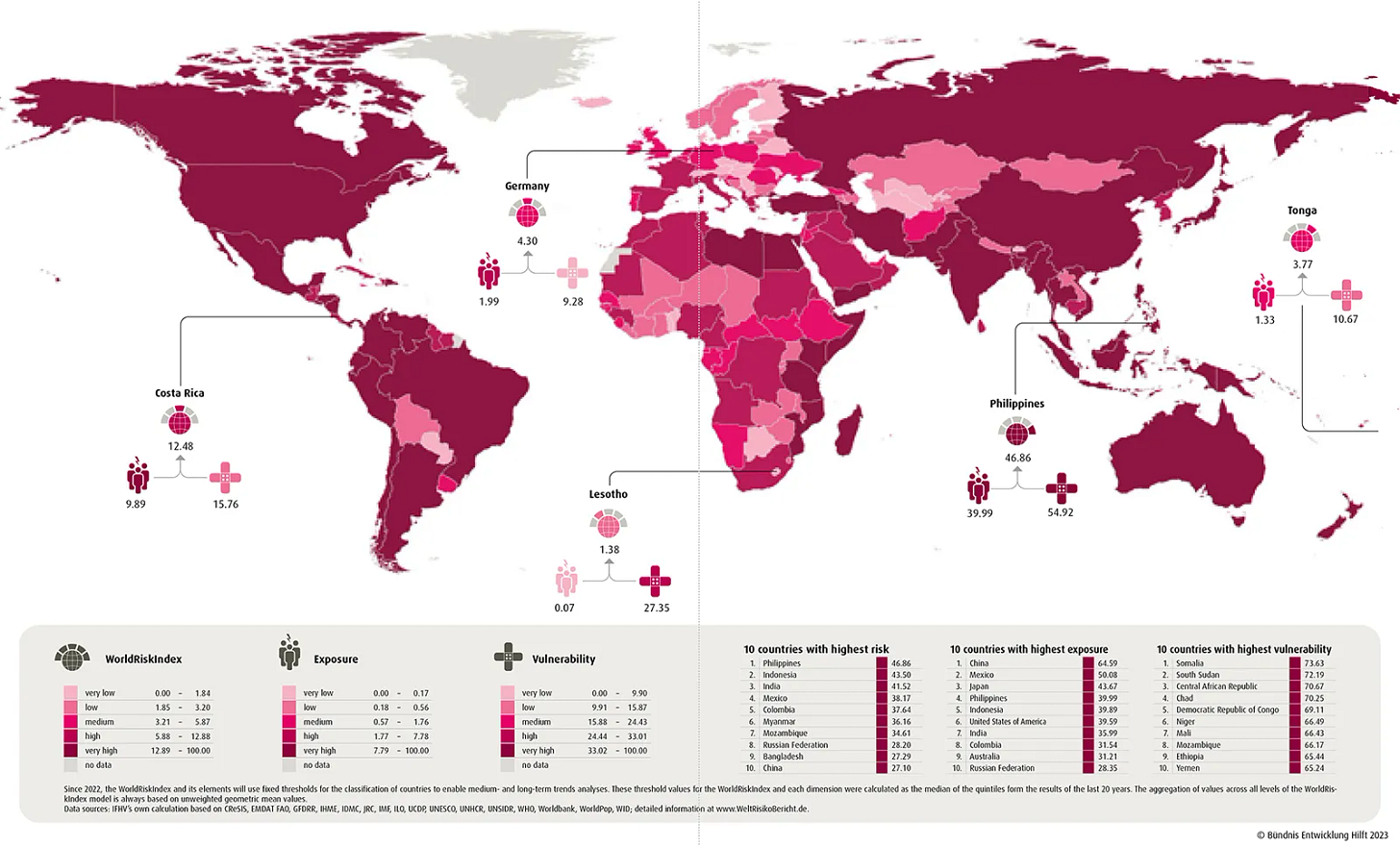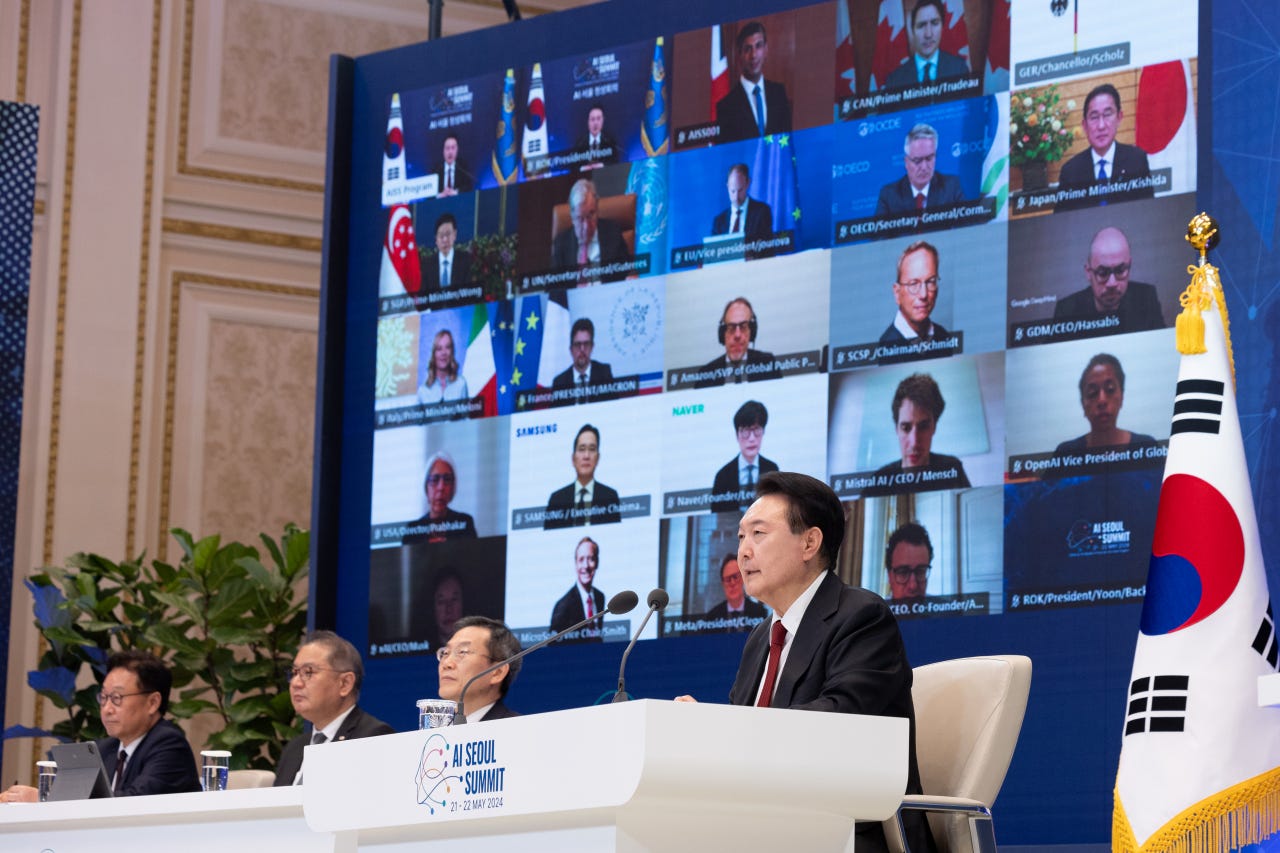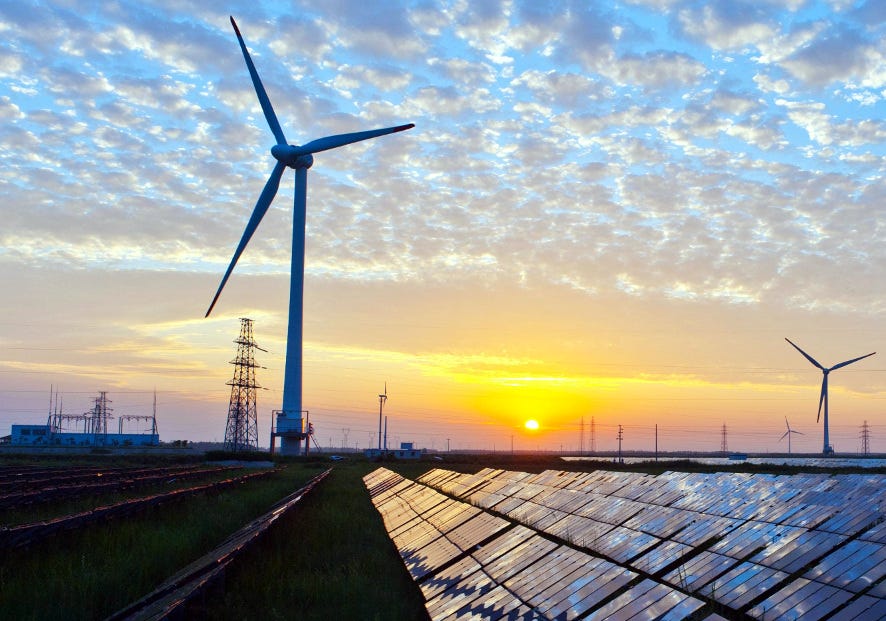Global Shield Briefing (19 June 2024)
Global risk reports, risk governance frameworks, and critical infrastructure
The latest policy, research and news on global catastrophic risk (GCR).
The term resilience has swiftly entered our lexicon. It offered an expression of our ability to face adversity and come out the other side stronger and renewed. It has become the topic du jour, a word of art, a modern mantra. Climate resilience. Supply chain resilience. Critical infrastructure resilience. Community resilience. One word to provide a concise yet enigmatic articulation of our yearning for steadiness in a turbulent world. But there is no resilience without risk. And the term itself, is, ironically, reaching breaking point. What does resilience mean in the context of global catastrophic risk? How does a nation, or the world, fortify itself to unprecedented and irreversible threats? And what happens if it’s not enough? Let’s explore.
Reporting on global risk and resilience

On 6 June, the Joint Research Centre of the European Commission released a new report based on a horizon-scan of emerging risk to the European Union. By investigating 40 threats, three – environmental degradation, environmental disasters, and loss of power by humans – were assessed as potentially existential (which is defined as “having a crushing impact across multiple generations”). A total of 29 threats were identified as globally catastrophic (having endurable or worse effects across the globe), with the most severe being failure of critical infrastructure, interruption of food supply, collapse of democratic governments and poverty.
On 19 June, the Lloyd’s Register Foundation released its biennial World Risk Poll, based on 147,000 interviews in 142 countries and territories throughout 2023. The Poll found that the world’s resilience remained similar compared to the 2021 results, though 20 countries saw significant declines. The report noted a number of policy interventions to improve resilience: early warnings; focussing on the most vulnerable demographic groupings; financial safety nets to help people survive and recover better from disasters; and increasing resilience at the individual and household level.
Policy comment: While local and national disasters draw the attention policymakers and their citizens, existential and global catastrophic risk appears as an increasing consideration or component of global risk reporting. The increasing risk is probably one factor, as well as the increasing sensitivity to global threats with catastrophic potential. However, these reports are useful only in as much as they drive action. Policy researchers and advocates must capitalize on global catastrophic risk being mainstreamed in these reports so that their insights lead to risk-informed decision-making. They can do so by supporting the tailoring of the reports for particular contexts, such as specific countries or region, translating the findings into actionable recommendations, promoting the results through events and discussions, collaborating with decision-makers to identify ongoing research and policy questions, and developing tools to help policymakers formulate and implement new policies based on the report findings. For their part, policymakers must compare the results to their own national risk and capability assessments to understand and resolve critical policy gaps.
Also see:
KPMG’s new report on geopolitical risk, which lists supply chain shocks and AI governance gaps as two of the top threats for economies and businesses in 2024.
OECD’s newly released “Framework on management of emerging critical risks”.
Navigating the patchwork of risk governance

Policymaking to reduce global catastrophic risk occurs across multiple layers of governance. For example, consider recent updates in AI policy.
The California State Senate has passed a bill, SB 1047, which aims to ensure the safe development of large-scale artificial intelligence systems. The bill, which requires passing through the General Assembly, requires AI labs to take safety precautions, creates whistleblower protections, and empowers California’s Attorney General to take legal action should an extremely powerful AI model causes severe harm.
In China, national policy and leadership are showing greater interest in developing large language models while balancing concerns around risk, according to an update by Concordia AI, an Beijing-based social enterprise dedicated to AI safety and governance. It also notes China’s involvement in bilateral and multilateral processes, including “China’s decision to sign the Bletchley Declaration, issue a joint statement on AI governance with France, and pursue an intergovernmental AI dialogue with the US”.
These challenges are manifesting in fragmented approaches between jurisdictions, with limited coordination or harmonization, as noted by a new Chatham House report on the challenge for global governance of AI. For example, the EU AI Act “reflects a distinctive European approach at odds with regulatory cultures and political technology agendas in the US and China, the two other major hubs of AI development.”
Policy comment: Navigating local, national and global governance is a challenge for AI risk, just as it is with other global catastrophic threats. National governments provide the overarching framework for risk governance, policies, regulations and standards. Meanwhile, the global nature of the risk requires countries to work together, set norms and align policies. Local or state rules can also be critical. Technology policy, particularly in the US, is often a product of the “California effect”, where the regulatory standards set by California, home to big tech and often the most stringent in the US, shapes the technology for the rest of the country, and even the world. These complex governing arrangements and effects mean that no country in the world has the exclusive ability to prevent risk from arising – whether AI, nuclear, pandemic or climate risk. All countries must also therefore prioritize risk preparedness: crisis management, contingency planning, government continuity, economic and financial stability, infrastructure and supply chain resilience, food and water security, and energy supply. It’s a failsafe if risk-creating countries take little action, or if the patchwork of governance regimes does not lead to effective prevention.
Also see:
A piece by Christian Ruhl, senior researcher at Founders Pledge, on the need for AI incident hotlines between the US and China.
An academic article from researchers at Beijing-based Center for Long-term Artificial Intelligence looking at red lines for existential AI risk.
Protecting critical infrastructure from catastrophe

On 30 April, the US government released National Security Memorandum (NSM)-22 on Critical Infrastructure, updating previous related policies. The memo aims to further enhance the resilience of US’s critical infrastructure (such as energy, communications, transportation, water and the defense industrial base) to global shocks, extreme weather, conflict scenarios and malicious attacks. It reinforces that “Federal departments and agencies have the responsibility to identify and mitigate national-level risk through this whole‑of‑government effort” and appoints the Director of the Cybersecurity and Infrastructure Security Agency (CISA) as the “National Coordinator” for the Security and Resilience of Critical Infrastructure.
A new RAND report surveys threats to US critical infrastructure. It finds that there is a high degree of interdependence in some sectors, which means that single events can quickly cascade, especially if they impact the communications sector. Furthermore, underinvestment in infrastructure networks, assets, systems and facilities has increased the likelihood that services could be disrupted.
Policy comment: The National Security Memorandum expands and solidifies existing US policy for establishing a whole-of-government, all-hazards effort to build resilience to global and national risk. Although risk of a global or catastrophic nature is not specifically mentioned, resilience to GCR cannot be achieved without resilience to more traditional or expected threats. This continued reinforcement of US policy on critical holistic policymaking is a positive step, and other countries should consider a similar approach. The appointment of a National Coordinator helps ensure that resilience remains a government priority and the policy guidance is implemented. For example, the memo requires updated sector-specific risk management plans, a National Infrastructure Risk Management Plan, a gap analysis of security and resilience requirements, and annual intelligence assessments on threats to critical infrastructure.
From a GCR perspective, however, additional and specific measures might be required. For example, the food system might be resilient to short-term global shocks, but could collapse due to a global catastrophe. Resilience, after all, has a breaking point. Therefore, critical infrastructure must be tested for GCR scenarios. Stress-testing health, financial, communications, resource and energy systems to a global catastrophe will reveal what additional measures are required beyond typical response and recovery efforts. Standard risk management – such as emergency response, stockpiling of critical goods and insurance mechanisms – could themselves be overwhelmed. Policymakers should consider GCR-specific efforts, such as refuges, infrastructure decentralization, large-scale mobilization of alternative food production, and catastrophe-proof reserves of critical supplies.
This briefing is a product of Global Shield, the world’s first and only advocacy organization dedicated to reducing global catastrophic risk of all hazards. With each briefing, we aim to build the most knowledgeable audience in the world when it comes to reducing global catastrophic risk. We want to show that action is not only needed, it’s possible. Help us build this community of motivated individuals, researchers, advocates and policymakers by sharing this briefing with your networks.


Thanks for sharing the the Joint Research Centre of the European Commission new report. I wasn’t aware of it.